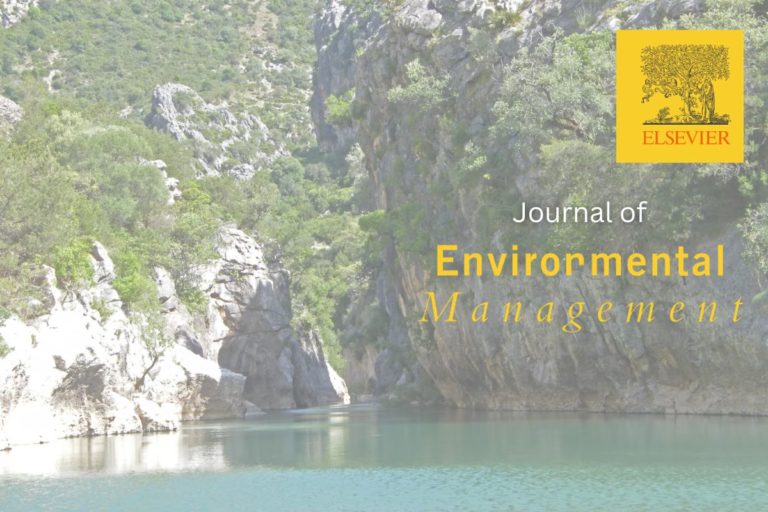A key work for the knowledge of organic pollutants in the Guadiaro river basin and their impact on the aquatic ecosystem.
The scientific journal Journal of Environmental Management has published a study in which Eurofins Iproma participates. The name of the study is “Study of the presence and environmental risk of organic pollutants regulated by the European Union and other organic compounds in the water resources of a region overlapping protected areas: the Guadiaro river basin (southern Spain)¹”.
Eurofins Iproma, a benchmark laboratory in environmental analysis and consultancy, once again demonstrates its commitment to the advancement of environmental research with its contribution to this study. A key work for the knowledge of organic pollutants in the Guadiaro river basin and their impact on the aquatic ecosystem.
Purpose of the environmental study on the Guadiaro River Basin
Overall, the main objective of this study was to assess the presence of organic pollutants in the Guadiaro river basin, which flows through the provinces of Malaga and Cadiz. The area is characterised by minimal human impact and abundant natural vegetation. The researchers took water samples from various sources. These sources included four carbonate aquifers, two detrital aquifers and four surface watercourses. They analysed them for 171 organic contaminants, major ions (Ca2+, Mg2+, Na, K, HCO++3-, SO42-, Cl-, NO3-) and stable isotopes (δ18OH2O, δ2HH2O, δ13CDIC)².
Generally, the environmental study aimed to identify the presence of organic pollutants³ covered and not yet covered by EU environmental legislation in water resources.
Key findings
Firstly, the researchers carried out an environmental risk assessment. They detected 25 organic pollutants, including pesticides, pharmaceuticals, drugs of abuse and polycyclic aromatic hydrocarbons (PAHs). Cocaine and its major metabolite were detected in 85% and 95% of the water samples respectively (0.001-0.18 μg/L and 0.004-0.6 μg/L, respectively). Pyrene (PAH) was found in all water samples (0.001-0.015 μg/L) and forest fires were identified as a possible diffuse source⁵.
Besides, an environmental risk assessment was conducted. Correspondingly, 25 organic contaminants were detected, including pesticides, pharmaceuticals, drugs of abuse and polycyclic aromatic hydrocarbons (PAHs). Cocaine and its main metabolite were detected in 85% and 95% of water samples, respectively (0.001–0.18 μg/L and 0.004–0.6 μg/L, respectively). Pyrene (PAH) was found in all water samples (0.001–0.015 μg/L) and forest fires were pointed out as a potential diffuse source⁵.
Connection between rivers and aquifers
Certainly, the study revealed a connection between rivers and aquifers, with drugs of abuse as the main indicators of this relationship. Contaminant concentrations were generally higher in groundwater samples, especially those from detrital aquifers, potentially due to an accumulation process promoted by irrigation-return flows and their slow dynamics compared to karst systems.
In conclusion, the risk of most of the pollutants detected in surface waters was low or absent, except for pyrene. Pyrene presented a moderate risk in surface water and an even higher risk in groundwater.
Therefore, the calculated risk quotients were generally higher in groundwater. This means that the threat to surface aquatic systems may grow as aquifers increase their influence on watercourses as the dry season progresses. Lastly, the relationship between δ13CDIC and most organic pollutants (especially pyrene) also reveals the role of soil as a storage medium.
Implications and recommendations
In conclusion, the results of this study, developed in 2014, have important implications for water resources management and for future research in the Guadiaro river basin. These are the main recommendations arising from the study:
- Water treatment: implement water treatment measures to eliminate threats to water quality in the middle part of the Guadiaro river. This applies especially to the Ronda wastewater treatment plant, which is a major source of pollution.
- Monitoring: continue to monitor water quality, especially during the dry season. In this season groundwater inputs are more important and the risk of accumulation of pollutants in the rivers increases.
- Additional investigations: Extend the monitoring network and analyse more surface water samples. Additional groundwater sampling in detrital aquifers⁶. This sampling aims to better understand the processes of pollutant reconcentration.
Footnotes
¹ M.I. Llamas, P.J. Fernández-Valenzuela, I. Vadillo, M. Sanmiguel-Martí, J. Rambla-Nebot, J.L. Aranda-Mares, P. Jiménez-Gavilán. Study of the presence and environmental risk of organic contaminants policed by the European Union and other organic compounds in the water resources of a region overlapping protected areas: The Guadiaro River basin (southern Spain). Journal of Environmental Management. Volume 345. 2023. 118903. ISSN 0301-4797. https://doi.org/10.1016/j.jenvman.2023.118903.
² δ18OH2O: it stands for the relative enrichment or depletion value of the oxygen-18 (18O) isotope in water compared to a reference standard, usually oxygen-16 (16O). This value is commonly used in hydrology studies to analyze water sources and evaporation processes, among others.
δ18OH2O: shows the relative enrichment or depletion of the hydrogen-2 (deuterium, 2H) isotope in water compared to hydrogen-1 (protean, 1H). It is used in hydrology research and allows the study of water origin and evaporation processes.
δ13CDIC: describes the relative enrichment or depletion of the carbon-13 (13C) isotope in Dissolved Inorganic Carbon (DIC) compared to carbon-12 (12C). This value is used in geochemistry and carbon cycle studies as a tool for tracking carbon sources and biogeochemical processes in water bodies and oceans.
³ Organic pollutants include polycyclic aromatic hydrocarbons (PAHs), polychlorinated biphenyls, pesticides, organic solvents, industrial chemicals, volatile organic compounds and chlorinated hydrocarbons.
⁴ Metabolite is any substance produced during metabolism.
⁵ Diffuse pollution is pollution generated in the aquatic environment by pollutants without a determined point of origin or generated over large areas whose control and detection are complicated.
⁶ Aquifers are geological formations with hydraulic properties that allow the storage and free transmission of water through their pores or cracks. Specifically, detrital aquifers are those that are formed mainly by clayey materials, very little permeable. They may also contain accumulations of highly permeable detrital materials, sands and gravels.

